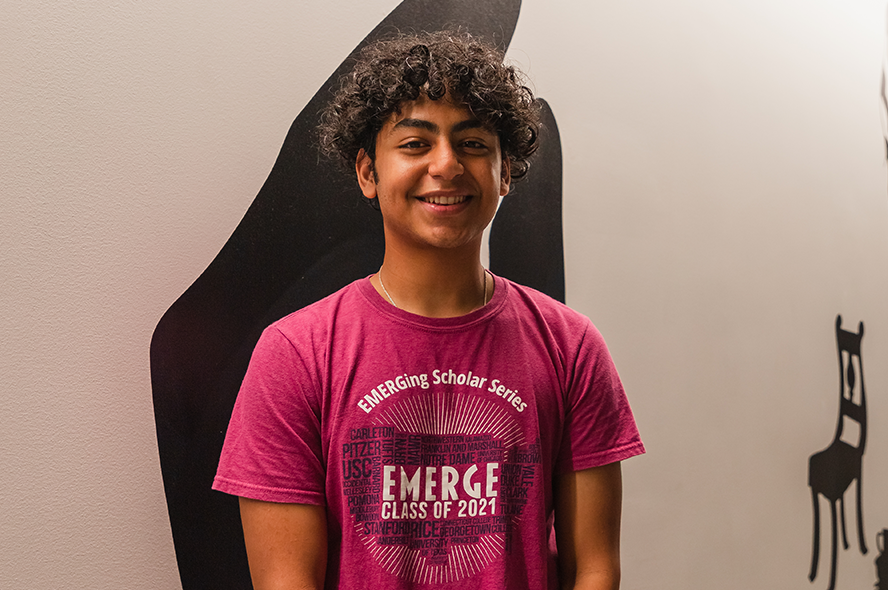STEM stories: Ricardo (Cardi) Garcia Mendez

Each year the Bridge to Engineering Success at Tufts (BEST) program welcomes a new cohort of students from groups underrepresented in STEM fields. Over the course of their undergraduate career, the BEST program provides a comprehensive, thriving environment for the students to support their personal and academic growth. BEST operates through the Center for STEM Diversity (CSD) at Tufts in conjunction with the Office of Undergraduate Admissions and the School of Engineering, and is led by CSD Associate Director Sehba Hasan.
This series highlights the work that BEST students are doing at Tufts.
As part of a final project for a biomechanics class, BEST participant Ricardo (Cardi) Garcia Mendez, E25, recently built a prosthetic leg. Working with fellow first year engineering students Tyler Mackowski, E25, Roberto Garcia, E25, and Jon Aretxabaleta, E25, the team built the prosthetic leg and tested out the gait of a potential user in the lab. Their leg was based on the iwalk 2.0, a prosthetic leg made to help people who have injuries walk. The group modeled their work on the computer before building the product and completing lab testing to see how well their prosthetic leg helped with walking and preventing further injury.
How is your model different than what is out there?
Usually, treatments that deal with leg injury involve crutches and not being able to use your hands or have much mobility, but the iwalk gives users support while having their hands free and therefore they have more mobility.
What was the purpose of this project?
The project was made with the purpose for us to recreate an already existing product called the iwalk and make any improvements we saw fit.
The result looks useful – did users think so?
It worked! Not only did we make a good replica, we also improved on some of the aspects of the design we thought could make it better. We added a support handle to grab on to while walking if needed and our “foot” felt more comfortable because we used a lacrosse ball to provide more cushioning while stepping.
Biggest challenge? What would you do differently if you could do it over?
There was a constraint of only being able to use PVC pipes and having to put together a prosthetic leg with only those materials was very challenging. PVC pipes are round and this made it difficult to connect pieces that were at angles and it made it a challenge to create a final product that could support human weight.
Watch a video of Cardi testing the prototype.
Department:
Mechanical Engineering